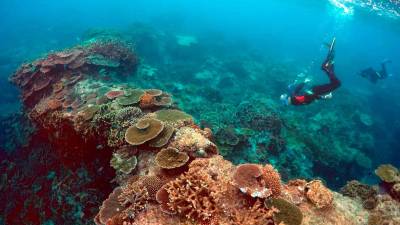SYDNEY: Australia’s Great Barrier Reef has suffered the largest decline in coral cover in two of its three regions over the last year, research released on Wednesday showed, following a mass bleaching of its corals that was among the worst on record.
The Australian Institute of Marine Sciences said the reef has experienced the largest annual decline in coral cover in its northern and southern regions since monitoring began 39 years ago, with coral cover dropping between a quarter and a third after several years of solid growth.
“We are now seeing increased volatility in the levels of hard coral cover,“ said Mike Emslie, head of institute’s long term monitoring programme.
“This is a phenomenon that emerged over the last 15 years and points to an ecosystem under stress.”
The reef, the world’s largest living ecosystem, stretches for some 2,400 km (1,500 miles) off the coast of the northern state of Queensland.
Since 2016, the reef has experienced five summers of mass coral bleaching, when large sections of the reef turn white due to heat stress, putting them at greater risk of death.
The 2024 event had the largest footprint ever recorded on the reef, with high to extreme bleaching across all of its three regions, the report said.
The Great Barrier Reef is not currently on UNESCO’s list of world heritage sites that are in danger, though the UN recommends it should be added.
Australia has lobbied for years to keep the reef – which contributes A$6.4 billion ($4.2 billion) to the economy annually – off the endangered list, as it could damage tourism. – Reuters
